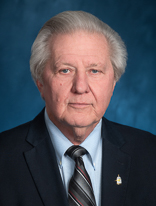Advancing Worker Safety

Kyle Downour, unit chair for United Steelworkers (USW) Local 1-346, threw himself into consoling fellow union members after a fire and explosion killed two co-workers at the BP-Husky refinery in Oregon, Ohio, last year.
But Downour, overwhelmed and stretched thin, realized that he was the one who needed support when federal investigators carried out a painstaking inspection of the damaged facility and held follow-up meetings.
Fortunately, a representative of the USW’s Health, Safety and Environment (HSE) Department arrived to help. He also took part in the walk-through and raised crucial issues, helping to launch the thorough investigation that ultimately held BP accountable for the tragedy.
Workers in numerous industries across the country need the same kind of trusted, reliable assistance in a crisis, and a proposed rule under consideration by the U.S. Occupational Safety and Health Administration (OSHA) would help ensure that they get it.
The so-called “walkaround rule” would underscore workers’ right to have representatives of their choice—officials from their international union, for example—take part in OSHA inspections in the wake of safety complaints or incidents like the one at the Ohio refinery.
“It was all priceless,” Downour said of the help he and the membership received from the union’s HSE Department during the inspection and months-long investigation. “They were on top of something before I could even get to the point of thinking about it.”
Right now, some employers try to stop local unions from bringing in outside representatives for inspections.
These companies fear the added scrutiny. Even in the aftermath of severe injuries or fatalities, they care more about exercising control than leveraging all of the resources available to find out what failed and avert future calamities.
The walkaround rule would stop employers from trying to stack the deck. And it would give workers a stronger voice and greater confidence in inspections.
“You’re going to be able to hold employers accountable,” Downour said, summing up how workers feel when they’re adequately represented. “You’re going to be heard. You’re going to have your rights.”
The USW is among many unions and pro-worker groups supporting the walkaround rule. The proposal also has the support of leading members of Congress and of Jordan Barab, a former deputy assistant secretary at OSHA, who wrote that the rule would “help workers come home alive at the end of the day.”
A separate agency, the U.S. Mine Safety and Health Administration (MSHA), already affords miners the right to decide who will represent them during inspections. OSHA’s walkaround rule would extend similar—and long overdue—protections to tens of millions more workers throughout the private sector. Both MSHA and OSHA are part of the Department of Labor.
In some cases, local unions need outside support because they have limited experience with OSHA or lack expertise with inspections or incident investigations.
Downour handled numerous safety issues at the refinery, now owned by Cenovus, during his many years as a Local 1-346 officer. He attended various HSE workshops and conferences. He interacted with OSHA and other safety agencies on multiple occasions since becoming active in the union.
But he still felt out of his depth given the enormity of the refinery incident and readily turned to the deep knowledge of the union’s HSE representatives. These experts not only assisted with similar inspections and investigations at other facilities over the years but helped to develop many of the nation’s workplace safety protocols.
“You don’t know what you don’t know,” Downour said, stressing that the HSE Department members were better positioned than he was to advance the investigation and safeguard workers’ rights.
OSHA ultimately cited BP for multiple safety violations and for failing to provide sufficient training to workers, who were attempting to address rising levels of liquid in a “fuel gas mix drum” when a vapor cloud ignited.
The agency also sent BP a Hazard Alert Letter in which it assailed the practice of rotating union members among various positions and suggested the company instead leave workers in a given job for longer periods, enabling them to build expertise. Downour credited the USW’s HSE Department with emphasizing the risks of job rotation.
That’s the kind of major contribution union representatives make all the time.
They serve as a “different set of eyes” and provide support for OSHA inspectors, who cannot possibly have exhaustive knowledge of every industry and workplace they investigate, explained Kerry Halter, president of USW Local 752L, which represents workers at Goodyear’s Cooper Tire plant in Texarkana, Ark.
One of Halter’s co-workers was killed on the job in July. In the aftermath of that tragedy, Halter said, he was grateful to have the assistance of an Ohio-based HSE representative from the USW who specializes in tire plants and provided the OSHA inspector with insights into industry-specific equipment and practices.
Halter said it makes no sense for corporations to oppose the walkaround rule when unions bring such knowledge and skill to investigations.
“Who doesn’t want their workers to be safe?” said Halter, noting employers even have self-serving reasons for building safer workplaces. “You have fewer injuries, you have less lost time. I think everybody wins.”
Downour recalls the relief he felt when the union HSE representatives arrived in Ohio to help him and other local union officers. Even more important, he recalled the strength that Local 1-346 members drew from the union’s commitment to them.
“They feel comforted, and they feel confident,” Downour said. “They know they’re supported. They know that the local is working with representatives who have their backs.”


